Module 2: Using the Petrographic Microscope
2.9 Atlas of Minerals in Thin Section
Elizabeth A. Johnson; Juhong Christie Liu; and Mark Peale
Now that you are familiar with how to use a petrographic microscope and some of the optical characteristics that can be observed for minerals, it is possible to identify minerals under the polarizing light microscope (or at least to eliminate some possibilities).
This section is intended for use as a reference for students who have completed the earlier sections of this chapter. Sources to locate optical data as well as images of igneous and metamorphic minerals are compiled below in alphabetical order by reference name.
Please note that this is intentionally NOT a comprehensive table of data for each mineral. In the next section of this chapter (2.10) there is a student synthesis assignment in which students compile their own tables and criteria to distinguish commonly-occurring rock-forming minerals.
Resources: Optical Properties
John Fathfull (ret. 1/12/2020) Identification Tables for Common Minerals in Thin Section. http://funnel.sfsu.edu/courses/geol426/Handouts/mintable.pdf
NOVA Mineralogy (ret. 2/16/2021) Minerals. https://blogs.nvcc.edu/mineralogy/minerals/
Smith College Geoscience Students (ret. 1/12/2020) Petrographic Data Files. http://www.science.smith.edu/geosciences/petrology/petrography/mineral_list.html
Webmineral.com (ret. 1/12/2020) A to Z listing of minerals . http://webmineral.com/Alphabetical_Listing.shtml#.XhtMwchKhGM
Resources: Minerals in Thin Section
Atlas of Metamorphic Minerals (ret. 1/12/2020) http://www.earth.ox.ac.uk/~oesis/atlas/metmins/index.html
Hollocher, Kurt (ret. 1/12/2020) Igneous Minerals in Thin Section: https://minerva.union.edu/hollochk/c_petrology/ig_minerals.html
Hollocher, Kurt (ret. 1/12/2020) Metamorphic Minerals in Thin Section: https://minerva.union.edu/hollochk/c_petrology/met_minerals.html
Mazdab, Frank K. (ret. 1/12/2020) thin section scans. https://www.rockptx.com/thin-section-scans/
NOVA Mineralogy (ret. 2/16/2021) Minerals. https://blogs.nvcc.edu/mineralogy/minerals/
rockPTX (ret. 1/12/2020) Playlist of mineral videos in thin section (ppl, xpl): https://www.youtube.com/channel/UClRPHZ4xYNB6BCQ3zaIv9Pw/playlists
Siddall, R., 2014, Minerals Menu: a catalog of minerals & textures in thin section. http://www.ucl.ac.uk/~ucfbrxs/PLM/PLMhome.html
Virtual Microscope (ret. 7/6/2020): Contains collections of rocks and meteorites in thin section. https://virtualmicroscope.org/
Optical and Crystallographic Axes Diagrams
The diagrams below show the geometric relationships between principle optical axes and crystallographic axes for some common biaxial rock-forming minerals. In these diagrams, OA = optic axis; X, Y, and Z are principal optic axes; a, b, and c are crystallographic axes. Crystal faces are labelled with Miller Indices (e.g. 001, 110, etc.).
Feldspar Group
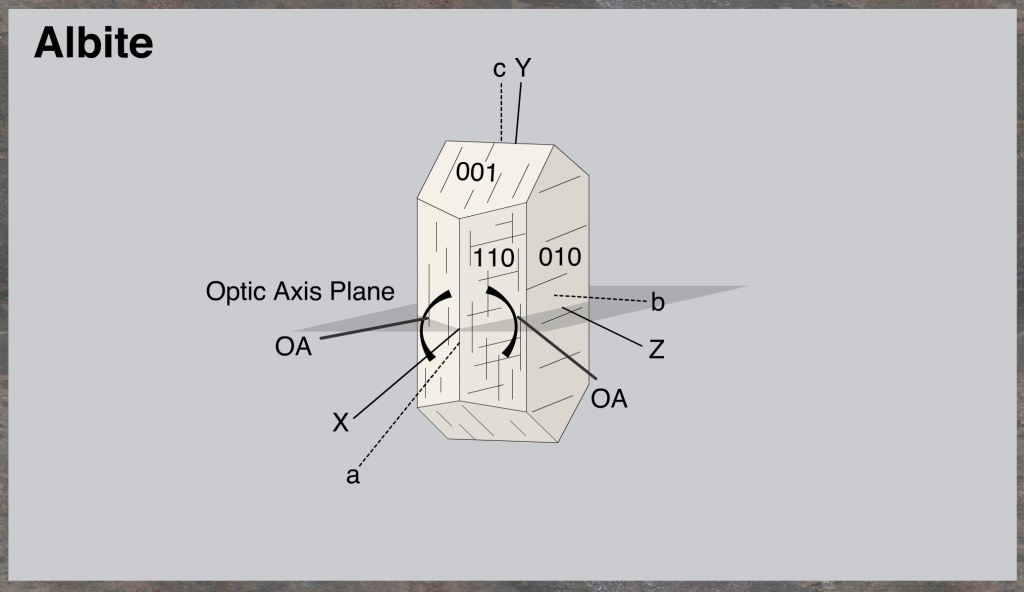
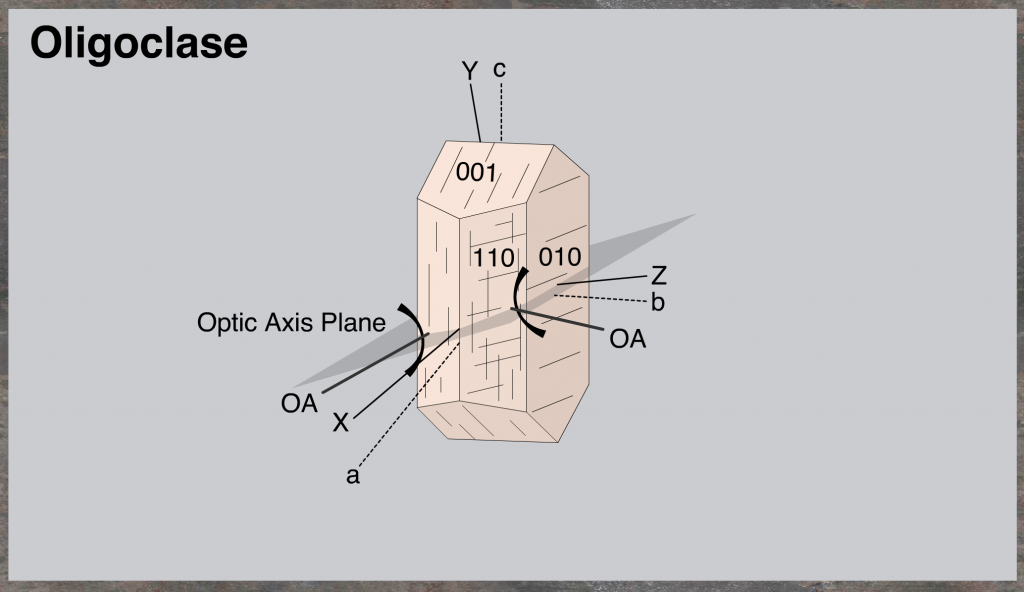
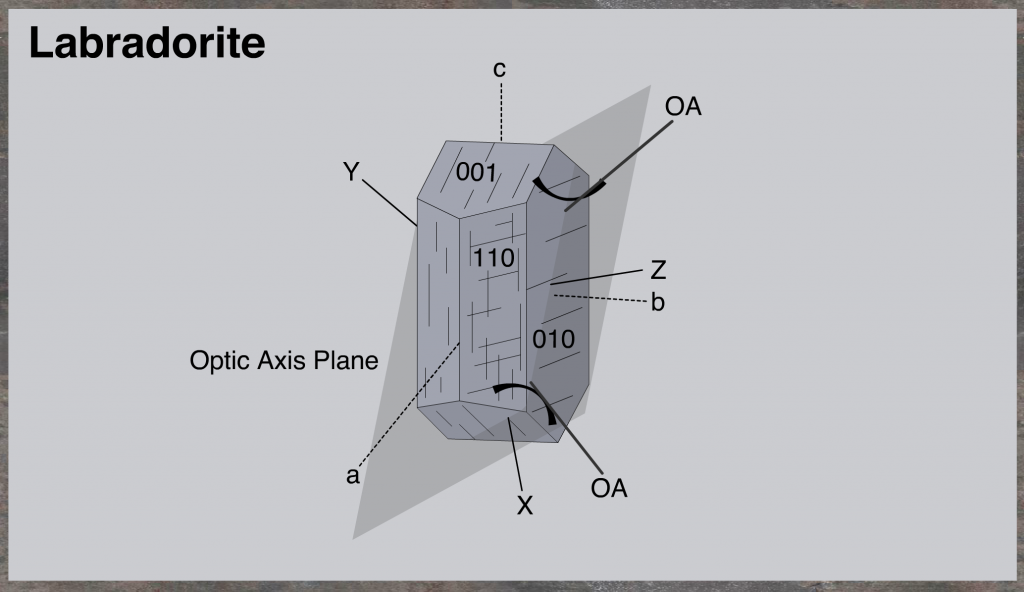
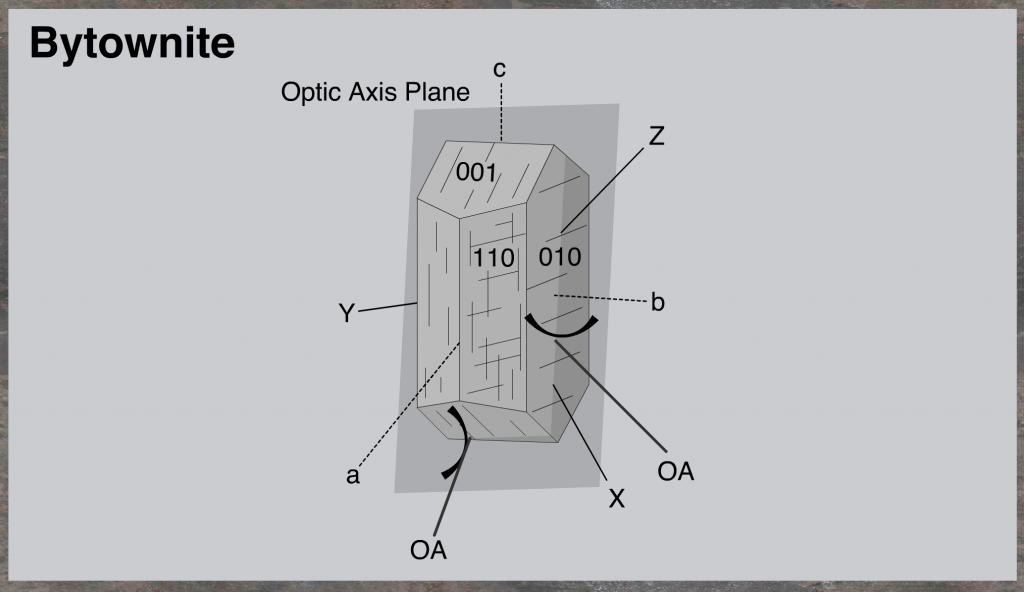
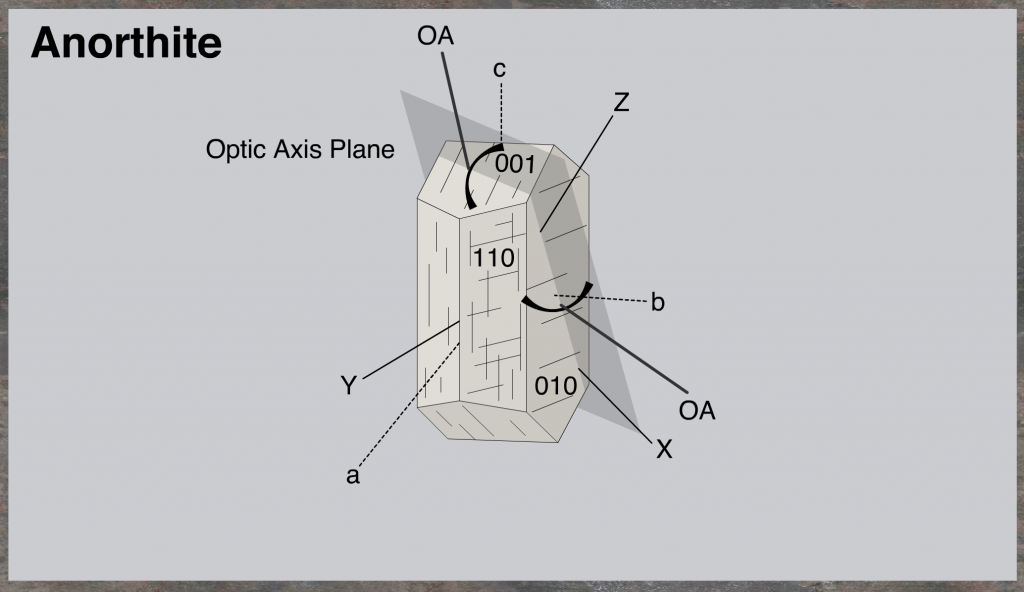
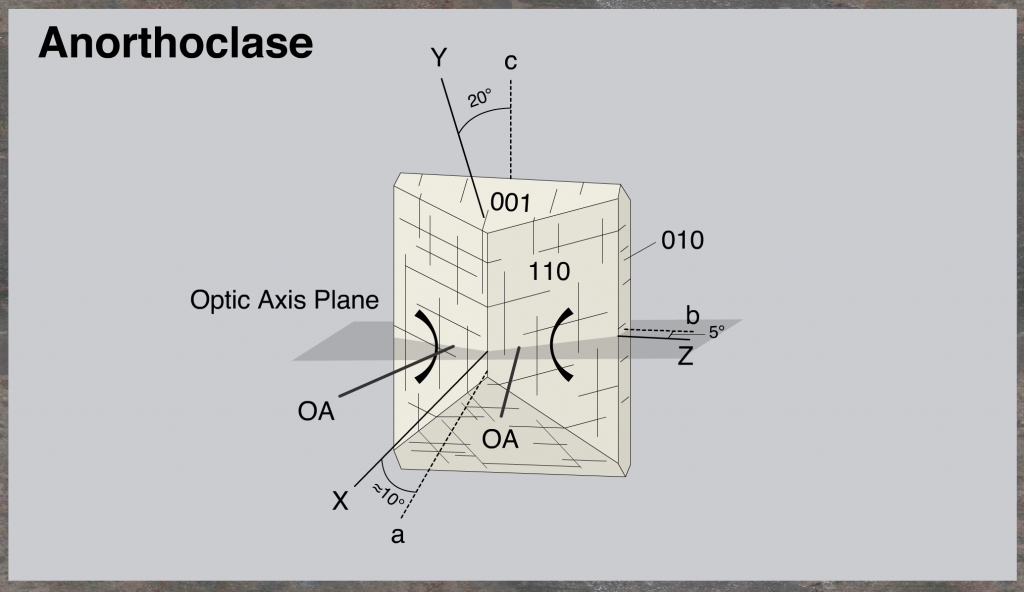
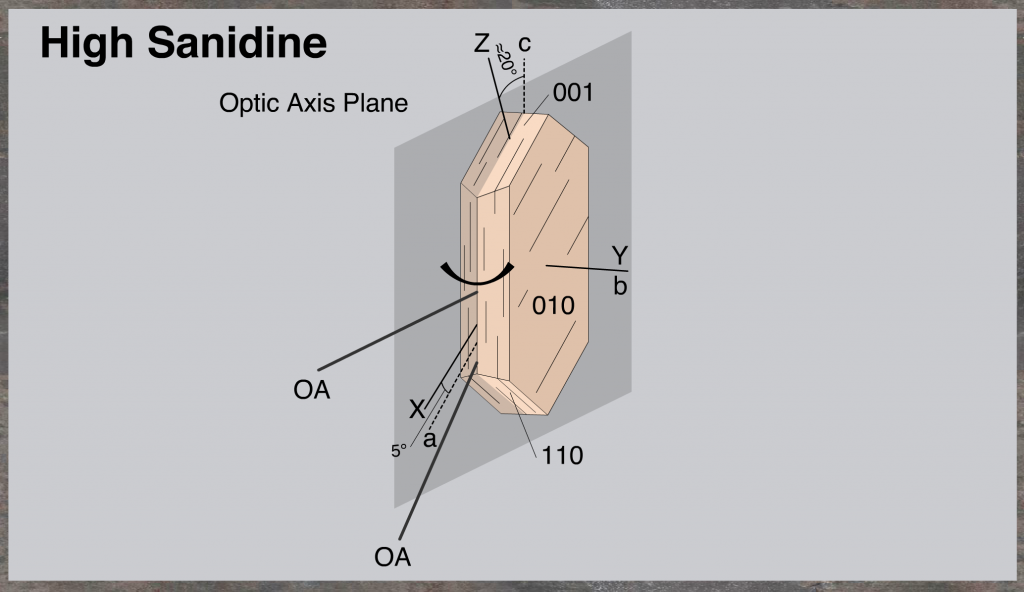
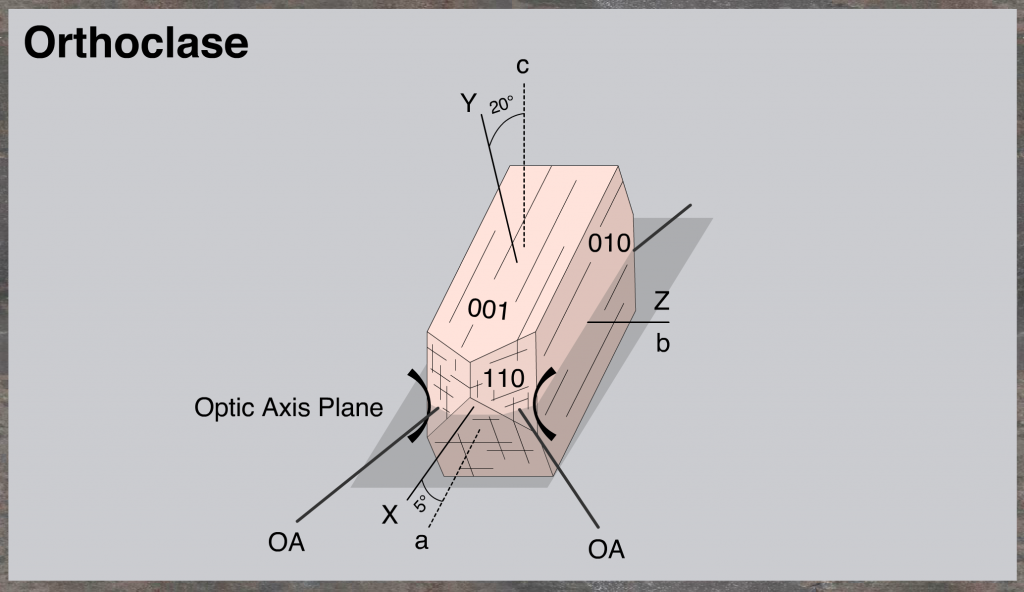
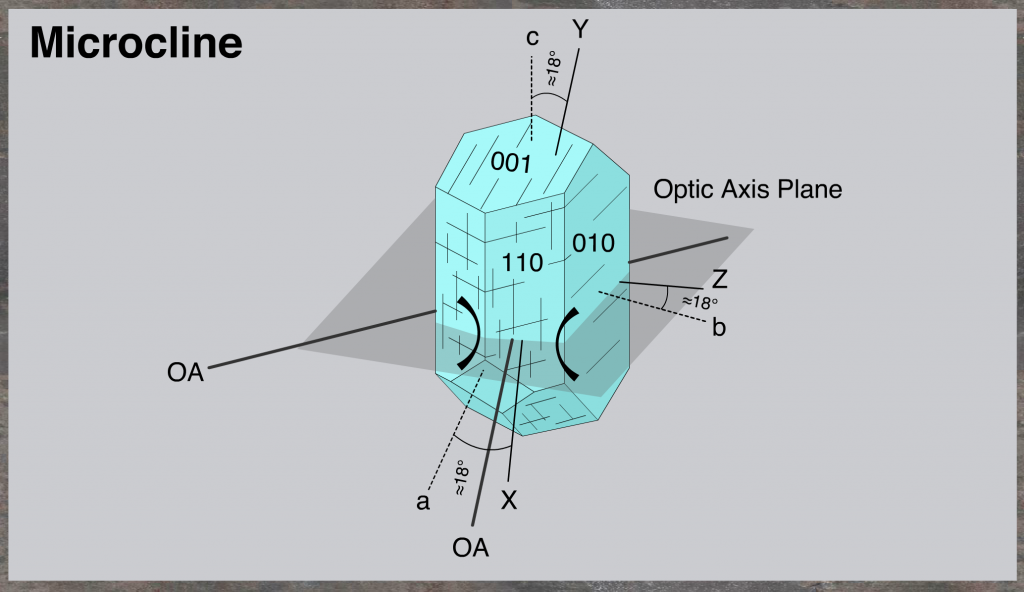
Talc
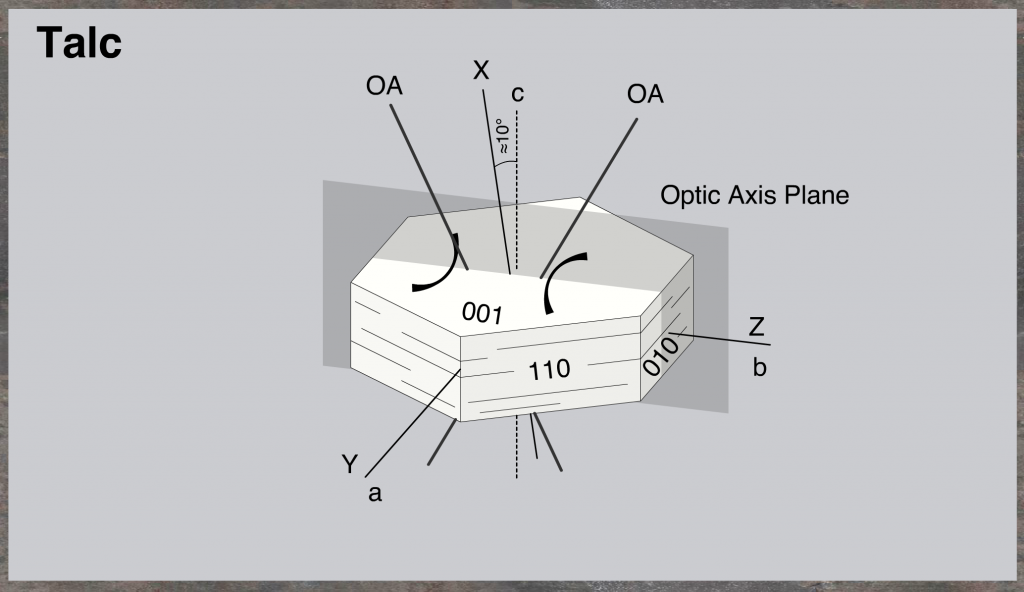
Mica Group
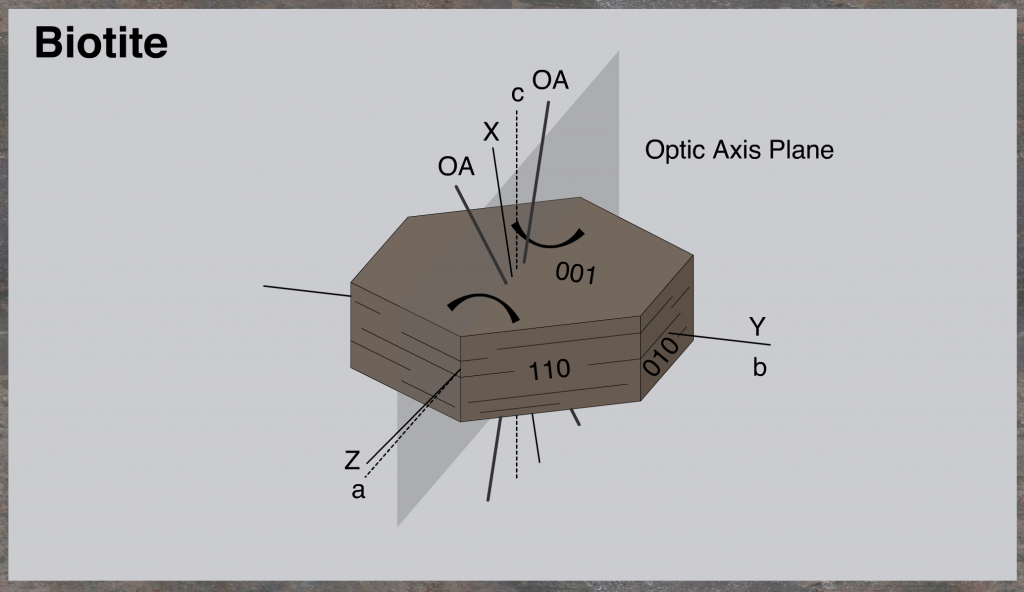
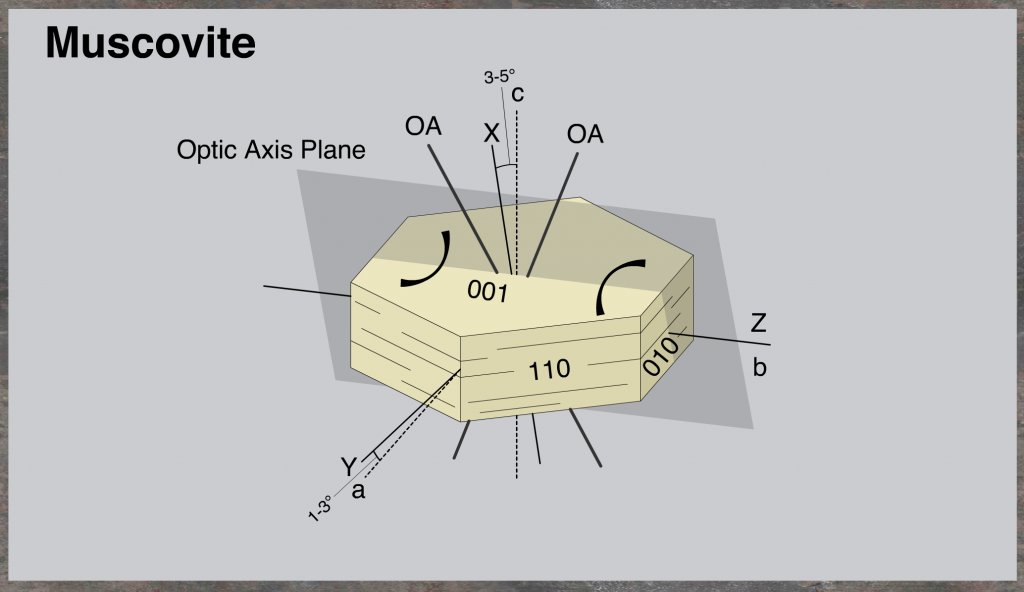
Chlorite Group
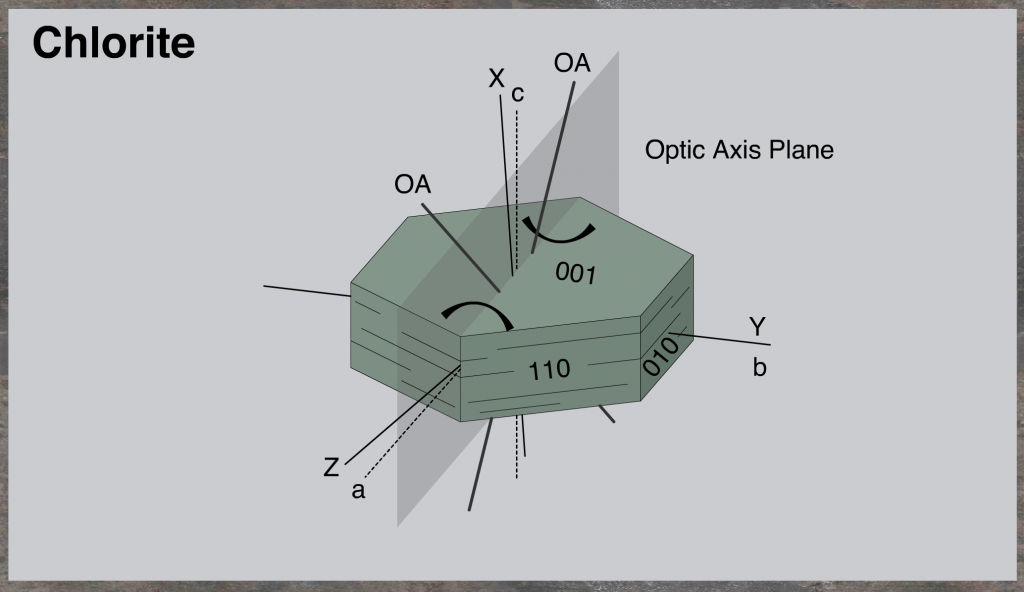
Amphibole Group
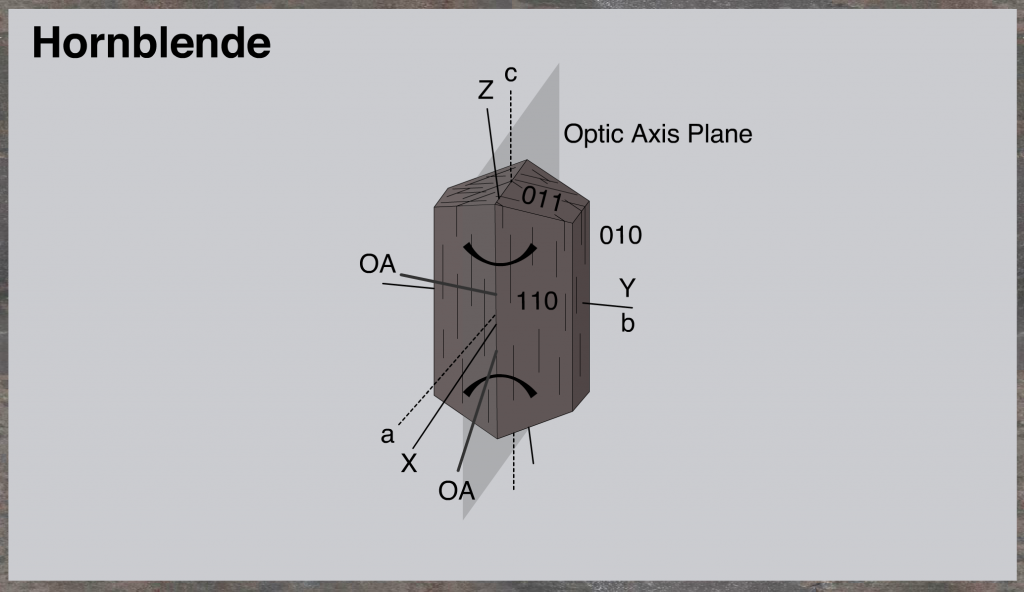
Pyroxene Group
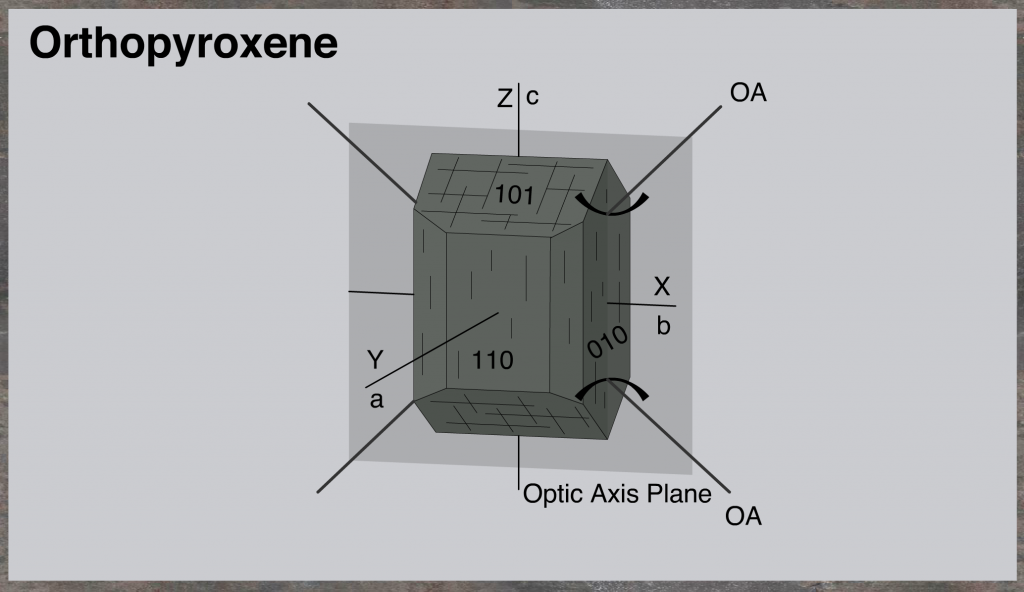
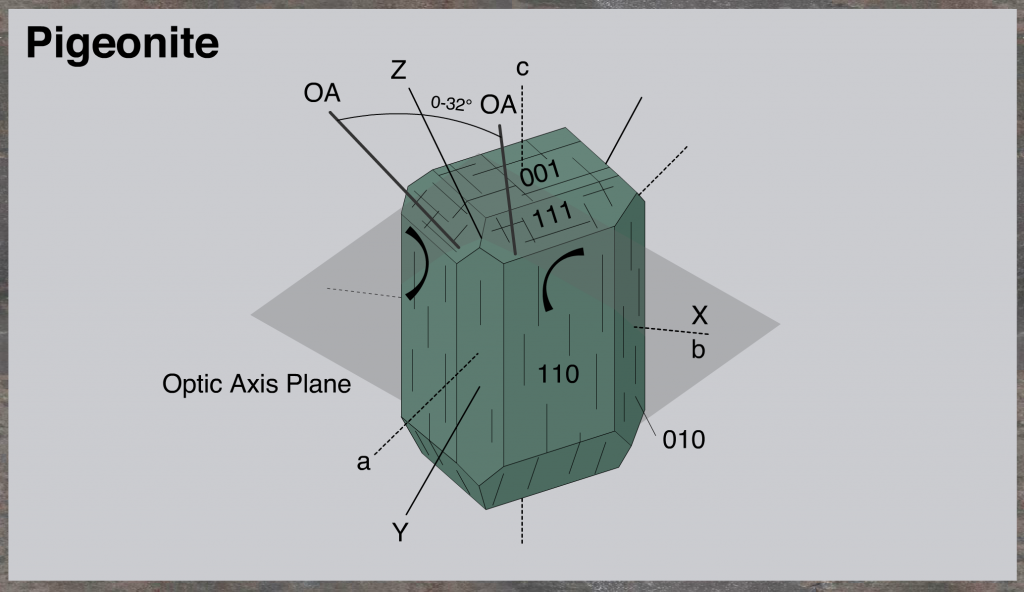
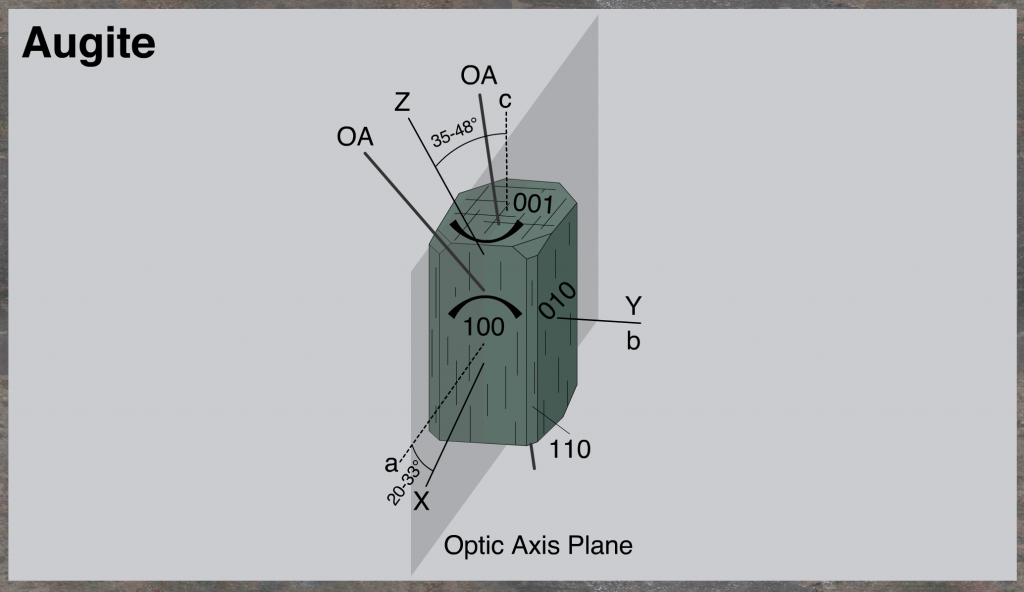
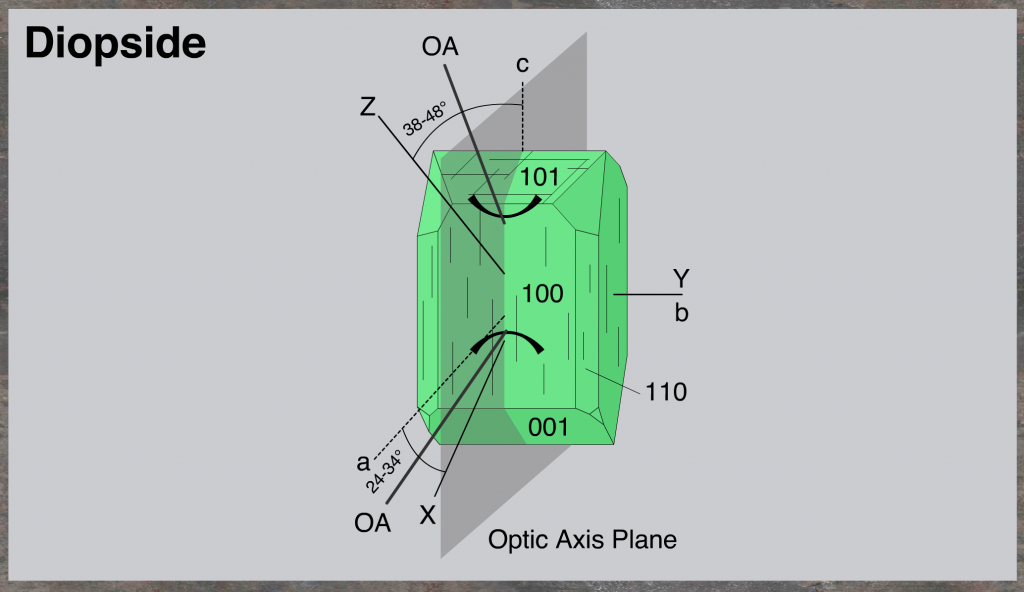
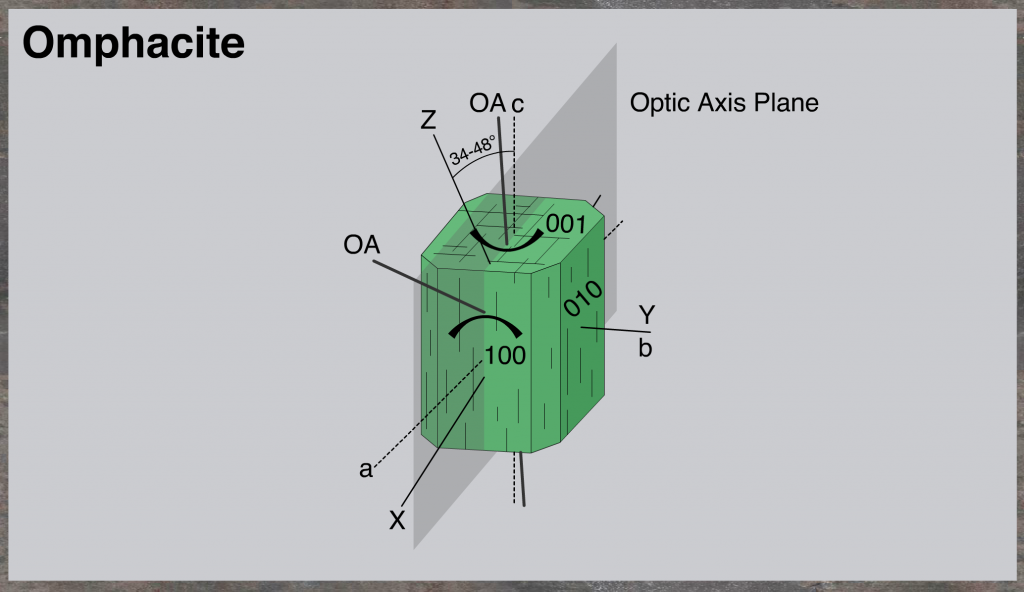
Epidote Group
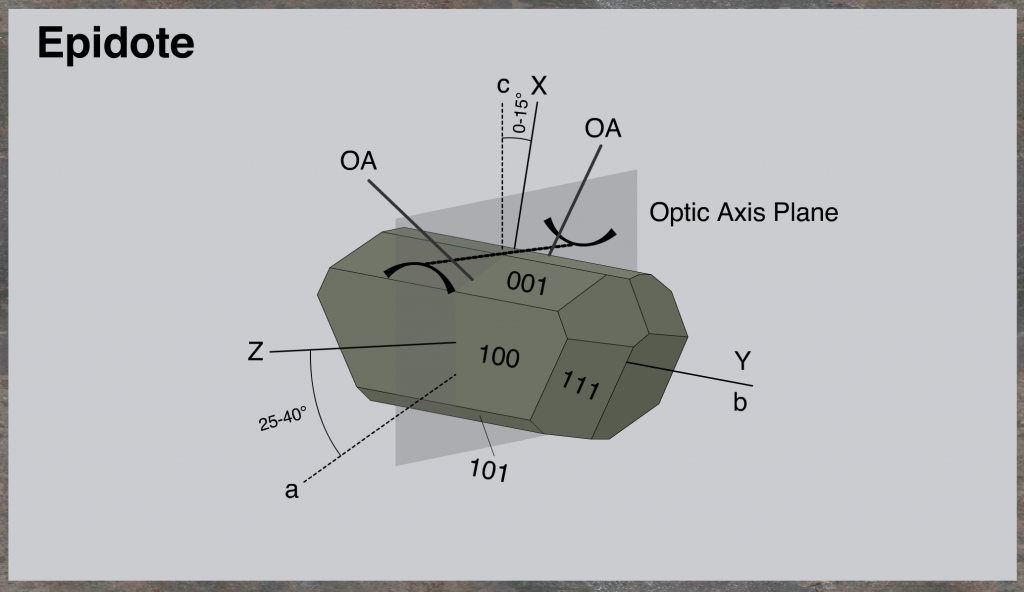
Olivine Group
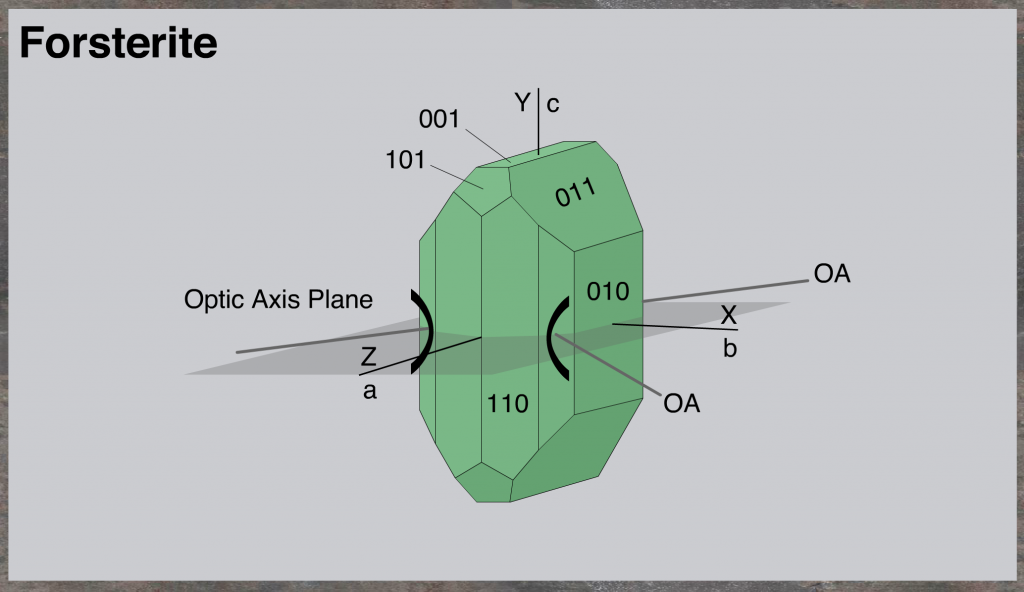
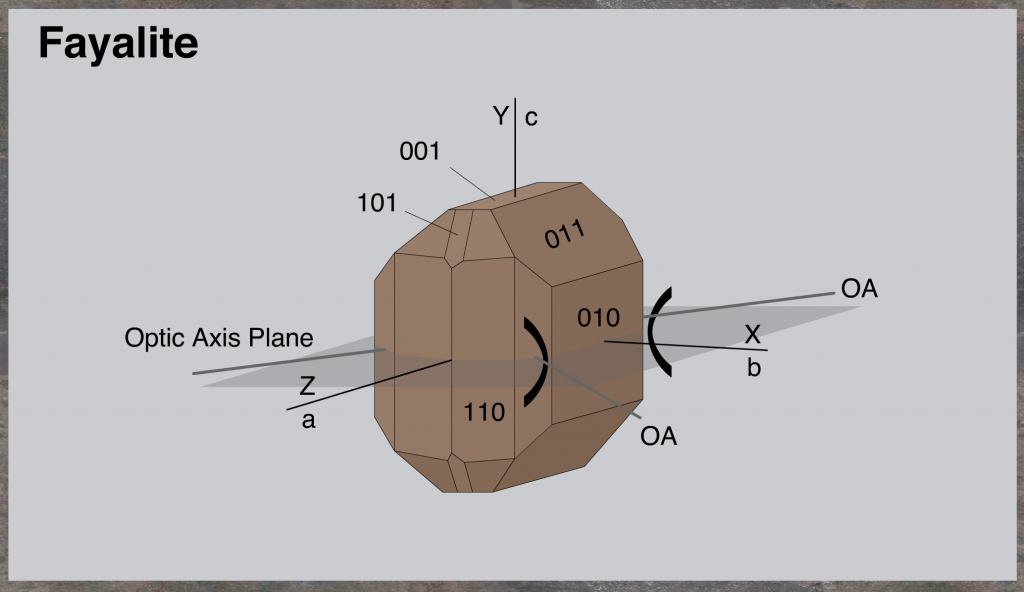
Aluminosilicates
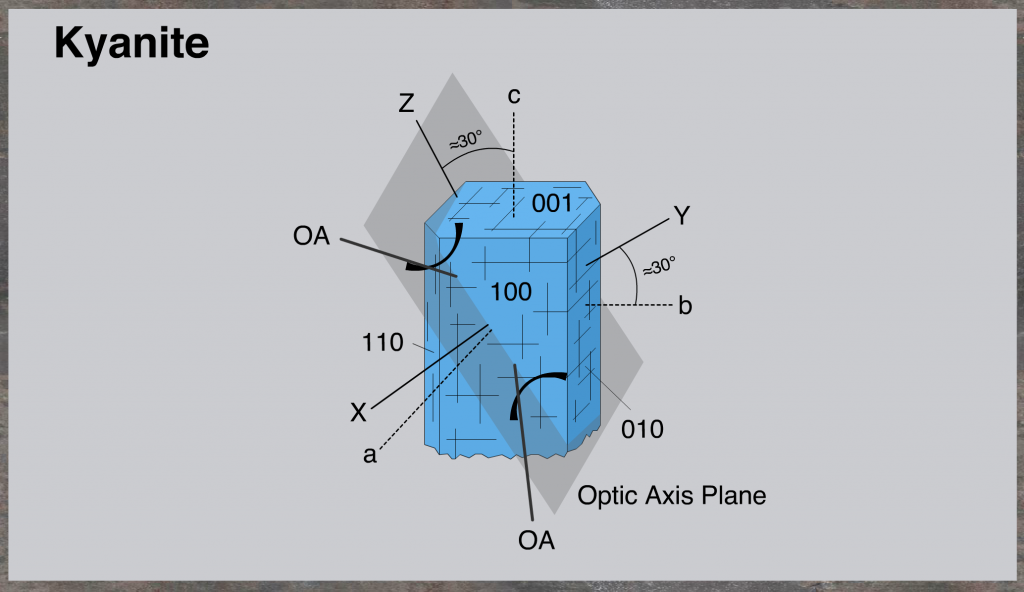
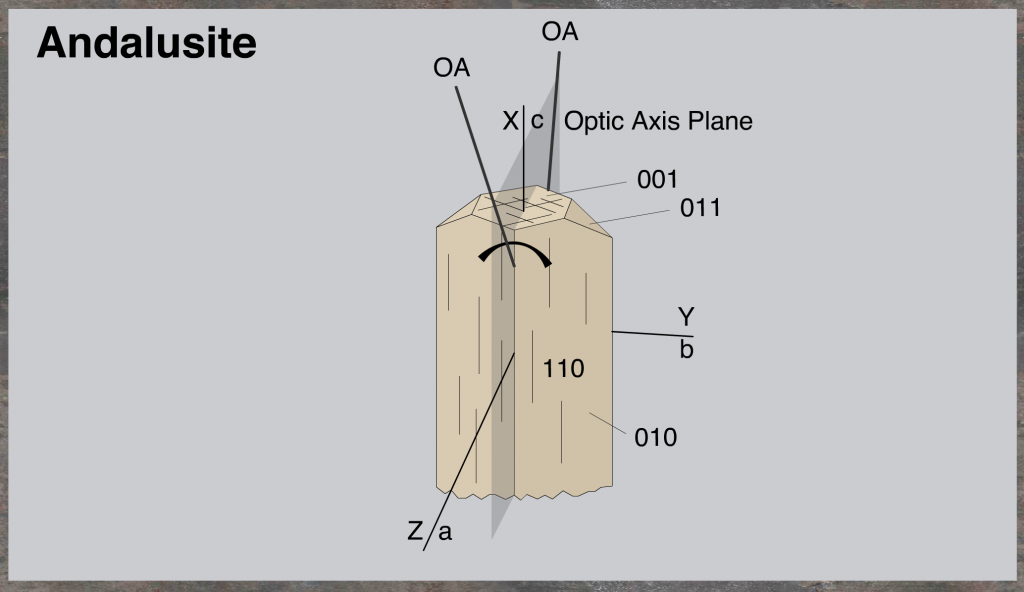
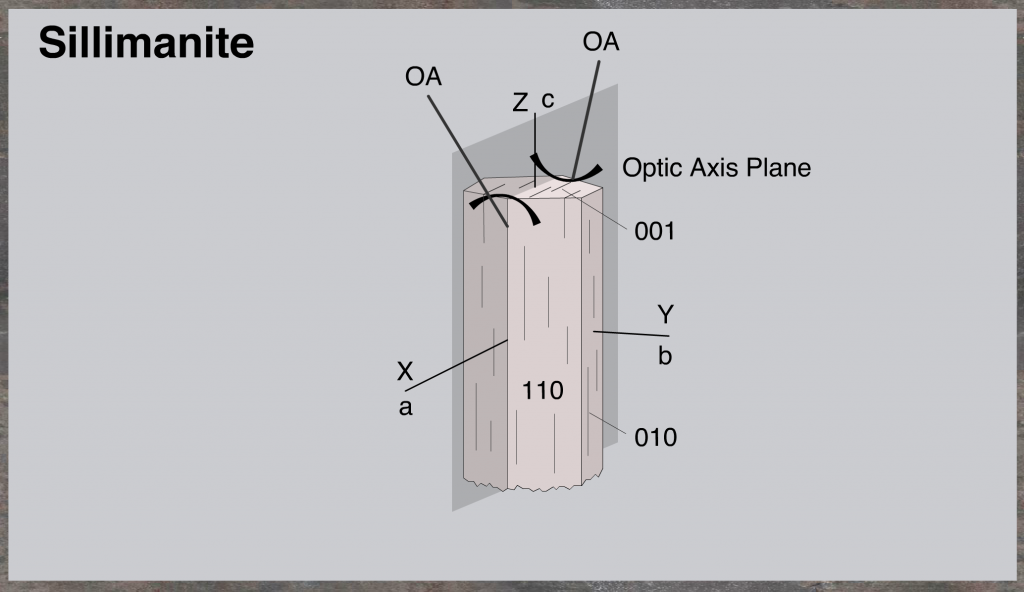
References
Optical and crystallographic axes data for figures are taken from:
Deer, W.A., Howie, R.A., and Zussman, J. (1992) An Introduction to the Rock-Forming Minerals (2nd Edition). Prentice Hall. 712 p.
Nesse, W.D. (1991) Introduction to Optical Mineralogy. Oxford University Press, 335 p.
Media Attributions
- 2_9 AlbitePlagioclaseFeldspar © Mark Peale and Elizabeth Johnson is licensed under a CC BY-NC-SA (Attribution NonCommercial ShareAlike) license
- 2_9 OligoclasePlagioclaseFeldspar © Mark Peale and Elizabeth Johnson is licensed under a CC BY-NC-SA (Attribution NonCommercial ShareAlike) license
- 2_9 LabradoritePlagioclaseFeldspar © Mark Peale and Elizabeth Johnson is licensed under a CC BY-NC-SA (Attribution NonCommercial ShareAlike) license
- 2_9 BytownitePlagioclaseFeldspar © Mark Peale and Elizabeth Johnson is licensed under a CC BY-NC-SA (Attribution NonCommercial ShareAlike) license
- 2_9 AnorthitePlagioclaseFeldspar © Mark Peale and Elizabeth Johnson is licensed under a CC BY-NC-SA (Attribution NonCommercial ShareAlike) license
- 2_9 AnorthoclaseAlkaliFeldspar © Mark Peale and Elizabeth Johnson is licensed under a CC BY-NC-SA (Attribution NonCommercial ShareAlike) license
- 2_9 SanidineAlkaliFeldspar © Mark Peale and Elizabeth Johnson is licensed under a CC BY-NC-SA (Attribution NonCommercial ShareAlike) license
- 2_9 OrthoclaseAlkaliFeldspar © Mark Peale and Elizabeth Johnson is licensed under a CC BY-NC-SA (Attribution NonCommercial ShareAlike) license
- 2_9 MicroclineAlkaliFeldspar © Mark Peale and Elizabeth Johnson is licensed under a CC BY-NC-SA (Attribution NonCommercial ShareAlike) license
- 2_9 Talc © Mark Peale and Elizabeth Johnson is licensed under a CC BY-NC-SA (Attribution NonCommercial ShareAlike) license
- 2_9 BiotiteMica © Mark Peale and Elizabeth Johnson is licensed under a CC BY-NC-SA (Attribution NonCommercial ShareAlike) license
- 2_9 MuscoviteMica © Mark Peale and Elizabeth Johnson is licensed under a CC BY-NC-SA (Attribution NonCommercial ShareAlike) license
- 2_9 ChloriteMica © Mark Peale and Elizabeth Johnson is licensed under a CC BY-NC-SA (Attribution NonCommercial ShareAlike) license
- 2_9 HornblendeAmphibole © Mark Peale and Elizabeth Johnson is licensed under a CC BY-NC-SA (Attribution NonCommercial ShareAlike) license
- 2_9 OrthopyroxenePyroxene © Mark Peale and Elizabeth Johnson is licensed under a CC BY-NC-SA (Attribution NonCommercial ShareAlike) license
- 2_9 PigeonitePyroxene © Mark Peale and Elizabeth Johnson is licensed under a CC BY-NC-SA (Attribution NonCommercial ShareAlike) license
- 2_9 AugitePyroxene © Mark Peale and Elizabeth Johnson is licensed under a CC BY-NC-SA (Attribution NonCommercial ShareAlike) license
- 2_9 DiopsidePyroxene © Mark Peale and Elizabeth Johnson is licensed under a CC BY-NC-SA (Attribution NonCommercial ShareAlike) license
- 2_9 OmphacitePyroxene © Mark Peale and Elizabeth Johnson is licensed under a CC BY-NC-SA (Attribution NonCommercial ShareAlike) license
- 2_9 Epidote © Mark Peale and Elizabeth Johnson is licensed under a CC BY-NC-SA (Attribution NonCommercial ShareAlike) license
- 2_9 ForsteriteOlivine © Mark Peale and Elizabeth Johnson is licensed under a CC BY-NC-SA (Attribution NonCommercial ShareAlike) license
- 2_9 FayaliteOlivine © Mark Peale and Elizabeth Johnson is licensed under a CC BY-NC-SA (Attribution NonCommercial ShareAlike) license
- 2_9 KyaniteAluminosilicate © Mark Peale and Elizabeth Johnson is licensed under a CC BY-NC-SA (Attribution NonCommercial ShareAlike) license
- 2_9 AndalusiteAluminosilicate © Mark Peale and Elizabeth Johnson is licensed under a CC BY-NC-SA (Attribution NonCommercial ShareAlike) license
- 2_9 SillimaniteAluminosilicate © Mark Peale and Elizabeth Johnson is licensed under a CC BY-NC-SA (Attribution NonCommercial ShareAlike) license

